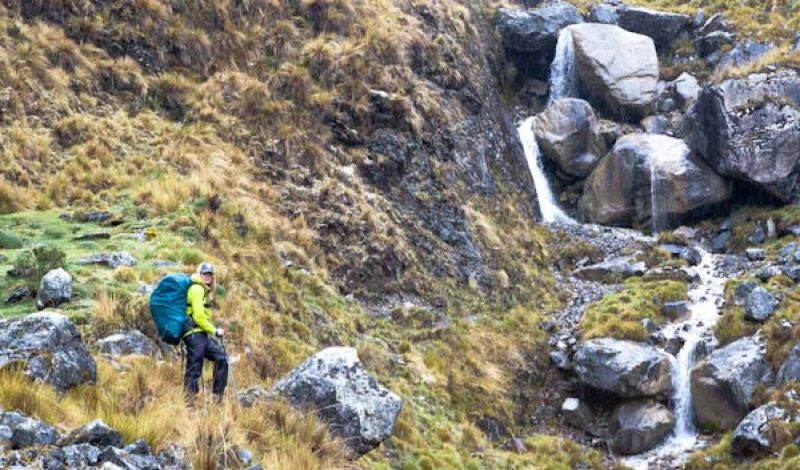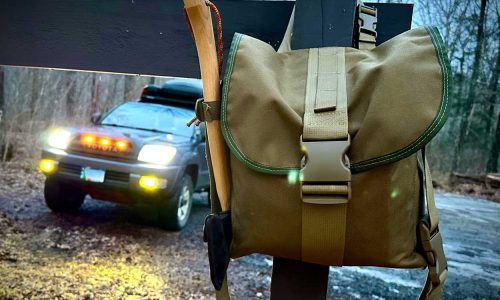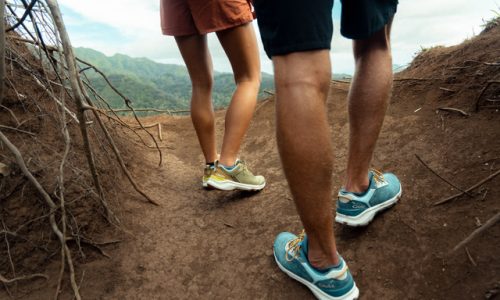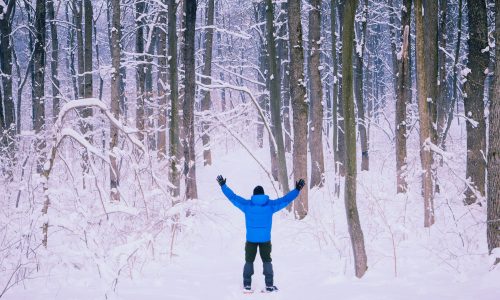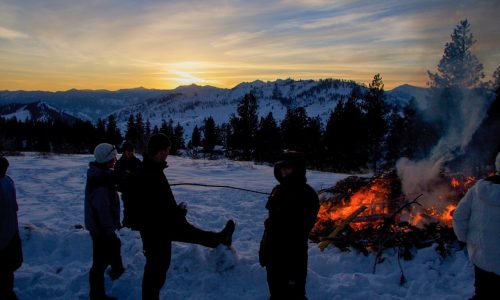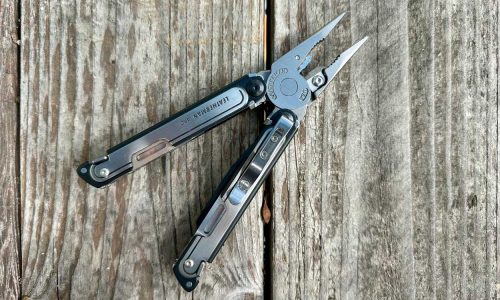First piece of advice: Do it.
The Salkantay Trek to Machu Picchu is awesome. It’s a scenic, 5-day trek to Machu Picchu that trades the masses lumbering up the Inca Trail for soaring alpine scenery and relative solitude. The trail starts in an alpine region at 12,600 feet, climbs over a 15,000-foot pass beneath glaciated peaks, then drops into a moist rainforest and river valley, ultimately arriving at the touristy town of Aguas Calientes and it’s stunning highlight, the Incan ruins of Machu Picchu. It’s a fantastic alternative to the much more crowded, expensive, and red-tape strewn Inca Trail, and—unlike the Inca Trail, you can do it yourself without a guide if you have decent backpacking skills and route finding skills.
If you’re going to go on you own, you’ll want to pick your gear carefully. The hike starts with a steep climb from about 12,000 to 15,000 feet, with a fair bit of climbing and descending, and everything from snow to searing sunshine. Lightweight gear is important, as are layers than can handle the humidity. Here are our recommendations for what to bring on the Salkanty trek or—more broadly—for trekking in general in a place like Peru, where high altitude alpine environments quickly morph into steamy, tropical rainforests, and where you want to be comfortable so you can focus on the amazing scenery and culture around you.
1. Ultralight Tent
We Recommend: Big Agnes Copper Spur Platinum 2
We are approaching a point of “peak lightness” in tents, and the Copper Spur Platinum is case in point. It’s hard to imagine how a freestanding, true two-person backpacking tent could get substantially lighter, or if it ever should. At 2 pounds, 5 ounces, the tent simply floats in your backpack. And yet this is a double-wall tent (a double-wall design is absolutely essential in humid areas like Peru) that has two doors for peaceful co-habitation. It’s chiefly made of the kind of nylon ripstop that feels like it will rip with a hard sneeze, but it can take some moderate, real-life abuse. Still, do not bring your dog in this tent, or pitch it over pokey brambles, or treat it with anything but a light touch. It’s a fragile, but incredible, tool.
On that double-wall point—don’t bring a single wall tent to a humid place like Peru, at least in subalpine zones. Condensation will build up quickly and soak your gear. You want the condensation to form on the inside of the rain fly and drip harmlessly down and away from the footprint. Plus, the bug-free ventilation of a mesh interior is great.
2. Ultralight Sleeping Bag
We Recommend: Sea to Summit Spark III Sleeping Bag

The nighttime temperatures around Machu Picchu are moderate, even at fairly high elevations like Soraypampa. Unless you’re camping higher than 12,500 feet (above Soraypampa), you’ll probably want a summer-weight bag. Given that, bring the lightest one you can find.
The Sea to Summit Spark has been among the top-rated ultralight sleeping bags for several years. It’s an incredibly light, warm bag, best for slimmer hikers who value extreme low weight and extreme compressibility, but without a great deal of other sacrifice. Nights on the Salkantay in October hovered in the upper 30Fs and low 40Fs at the higher elevations (12,000 feet at Soraypampa), and in the 50Fs when we dropped down into the jungle near Andenes. The 25-degree Spark turned out to be the perfect bag for that climate—easily warm enough to feel cozy in the middle of the night in base layers, and not oppressively warm on mild nights. It comes with its own ultralight compression stuff sack and packs down to the size of a Nerf football.
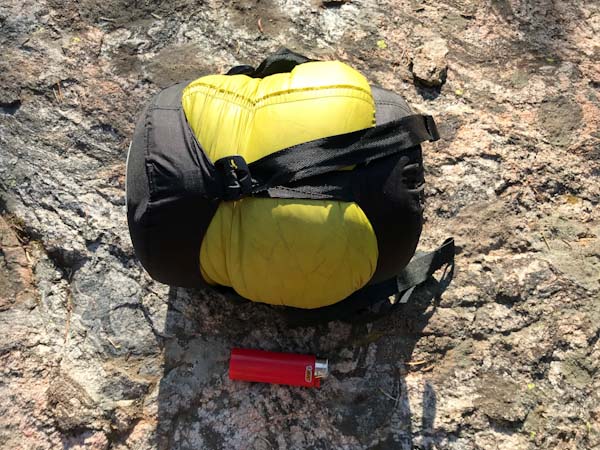
Cut narrow for weight and heating efficiency, it’s not a bag for portly or broad shouldered hikers. And since the zipper only goes to the knees, it doesn’t allow a lot of venting options for warmer nights. But if low-weight and low pack volume is your main criteria—as they should be if you want to move quickly at 14,000 feet—I don’t think there is a better bag out there. I absolutely loved it.
3. GPS
We Recommend: Garmin InReach Explorer GPS
You don’t really need to carry a GPS on the Salkantay trail—but it certainly helps. We often came across forks in the trail when there weren’t locals or other trekkers around, and it was helpful to have downloaded .gpx tracks in from other trekkers in advance to know with confidence we were heading in the right direction. And it was very helpful to know the real-time distance to our next camp on two of the afternoons, especially on our second day, as the sun began to set and it was clear we still had a couple miles to go before we’d find a decent campsite in the steep terrain.
Any GPS will provide that basic functionality, but what I liked about the Garmin InReach Explorer was its communication power. You can receive texts from friends and family along the trip, and send messages back (although typing is laborious). The user interface has not updated much since the mid-2000’s, so you still have to toggle messages letter by letter, although the word suggestions are helpful to speed things up a little bit. The international map suite was not all that detailed or impressive, but we were able to download waypoints from other trekkers that we relied on to know which hamlets we were approaching, and where the trail was up ahead.
One annoying quirk with the online route-tracking–after a quick warning, the GPS tracking function shuts down as the battery gets low. This can be good if you need to focus on what matters, like getting to Point B, but can cause concern among people who are tracking your progress from home.
Dad, it’s OK, I did not actually vanish.
4. Stove and Cookset
We Recommend: GSI Pinnacle Dualist Complete
For years, I’ve been a fan of Jetboil and MSR Reactor stoves and their impressive boil times. But where low-pack volume and low weight is key, I am a bigger proponent of integrated stove cooksets—systems that let a set of lightweight bowls, stove and a fuel canister nest inside a perfectly sized cookpot.
The GSI Pinnacle Dualist Complete is my favorite set. It is a full cookset for two, with insulated bowls, a titanium pot, a carrying bag that doubles as a very useful water basin and dish sink, and a simple, efficient burner with aluminum windscreen. It’s smart in so many ways. There are actually four bowls, one set is insulated with lids, so you can make something like a miso soup while letting dehydrated ingredients soak. The insulated bowls can also serve as mugs, if needed. The burner is fast and admirably wind resistant with the windscreen set up, and simmering is good. We prefer to cook dehydrated food, as opposed to heating water for rehydrating a pouch of food, and the stove is good at simmering a re-hydrating stew without torching the bottom. And the fabric water basin proved critical in places where we had to collect water to pump from faucets. This set is brilliant and underrated, and it’s part of my new go-to kit. Fitting all the pieces in the perfect order so the lid can close can take a few tries, and you can just chuck the flimsy sporks that are provided and bring your own.
It’s a fairly inexpensive system, and has a few quirks, but overall, it’s an incredible value and one of my ultralight go-to’s.
5. Rain Shell
We Recommend: The North Face Summit L5 Ultralight Storm Jacket
Hiking in Peru, you’re going to need a real rain shell. It rains a lot, and when it rains, it really rains.
Given the heat and humidity, I was glad The North Face let me know about the Summit L5 Ultralight before we left for the trip. It’s the lightest Summit Series jacket the company makes—a scant 6.1 ounces. “Summit Series” means it’s part of The North Face’s collection for climbers and harsh alpine environments, not light duty aerobic efforts. It’s a fair distinction. The jacket is built like a full-scale storm shell, with a 3-layer fabric and taped seams, built for exterior and interior abrasion and soilage. And yet it is phenomenally light and packable, collapsing small enough to fit into the pocket of your pants (not that that’s very comfortable). I absolutely loved how light this jacket was, both in the backpack and when I had to wear it hiking uphill through a drenching, 70-degree day of monsoon rain—it is far more comfortable in hot, humid environments than a traditional storm shell. This is one of the coolest ultralight, 3-layer shells I’ve seen and it’s going to be a staple on our warm weather backpacking trips in the Rockies.
6: Backpacking Mugs
We Recommend: GSI Infinity Backpacker Mugs
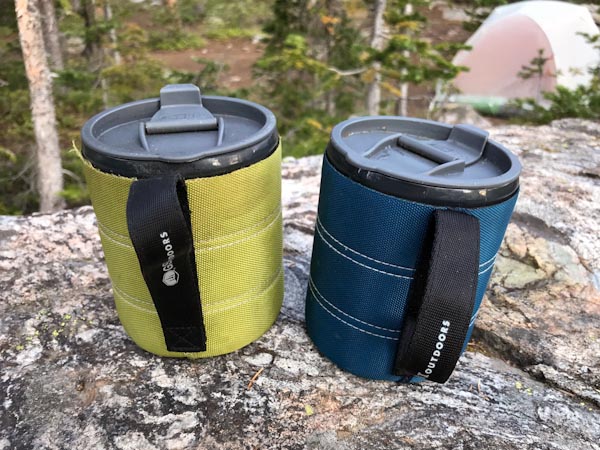
There is one indulgence we let ourselves have on the trail — a nice set of insulated, lightweight mugs. The GSI Infinity Backpacker Mugs don’t nest (a bummer), but they do have a nice, secure fitting lid and insulating neoprene sleeve with a handle that makes them easy to hold filled with hot tea, and keeps the tea warm for a surprisingly long time. I’ve used a lot of backpacking mugs, and these are my personal favorite. They have all the features you’d want—a secure lid, great insulation, low weight, and low bulk.
7. Tech Clothing
We Recommend: Flylow Royal Shirt
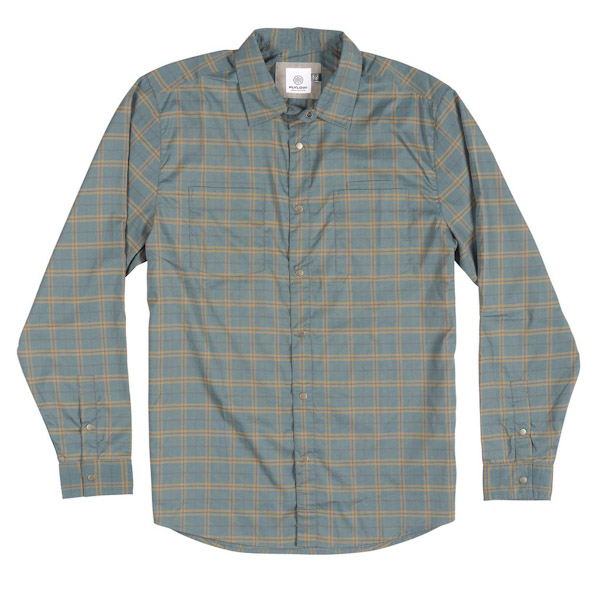
In the buggy lower elevations near Machu Picchu, a thin, long sleeve polyester shirt is essential. You want long sleeves because the bugs are really bad. You won’t see them, but these little midges will be eating up your arms, especially around your elbows. You won’t notice the bites for a couple days, and then you’ll be scratching them raw for a couple weeks. Rather than smother myself with DEET, which is nasty stuff, I prefer to wear a realy light, long sleeve shirt, despite the heat. I brought Flylow’s Royal Shirt—a thin, quick-drying polyester shirt that offered good, natural bug protection and was light enough on skin to wear on the really hot days, like our the sunny, humid, 2,000 vertical foot slog we did to Llactapata on our final day. It’s a technical shirt that has the style and cut of a town shirt, which made it easier to rationalize leaving behind a second shirt for the night at the bars and restaurants in Aguas Calientes.
8. Baselayers
We Recommend: Merino Wool
I always bring two sets of clothes—one set of “hike” clothes to get wet and dirty and one set of clean “sleep” clothes to sleep in. That’s all. My sleep kit is a merino wool baselayer top and bottom and a pair of merino wool quarter cut running socks. Always bring wool, not polyester, to sleep in—they stay fresh longer, keep you warmer, feel nicer on your skin, and work better if they get a little damp. It’s also your emergency layer if it gets really cold on a hiking day, like over a pass.
Honestly, any set of merino baselayers works fine. I have an Icebreaker 200-weight top and pants that I love.
9. Lightly Insulated Jacket
We Recommend: Outdoor Research Ascendant Hoody
The Ascendant is a jacket that’s hard to pin down. It’s a lightly insulated jacket, but it’s also an aerobic softshell, and it works a bit like a windbreaker. When I first heard all that, I scratched my head and though—so it’s not really a jacket for for anything then? The truth is this jacket is for just about everything.
It turned out to be a surprise favorite in Peru – offering the perfect amount of a breathable insulation for climbing over a cold, 15,000 foot pass when down would be overkill, and it never felt steamy, even during evenings in the milder jungle elevations. The stretchy, lightweight face fabric offers a fair bit of wind protection, and Polartec’s Alpha is an excellent, breathable synthetic insulation. This is a fantastic utility layer, and one I’ll have in heavy rotation after the trip.
10. Video Camera
We Recommend: GoPro Hero6 + Karma Grip
Like a lot of travelers, we’re evolving beyond still photographs. A good video captures much more of the spirit of a place than a jpeg. If you’re serious about capturing your experience, you’ll probably have a DSLR shooting 4K video with interchangeable lenses, but that isn’t a great option if you’re doin anything while moving or shooting near water—the image stabilization is rarely good enough, and you’ve got a heavy, fragile and insanely expensive camera to protect from the elements.
GoPro’s Hero6 was a huge leap forward for the company and for travel-ready action cams. The cameras are tiny, weightless, and packable, shooting in 4K is amazing, and the water- and shock-proof housings are useful in rain-soaked places like Peru. But it’s the new onboard images stabilization features take this camera to another level—especially if combined with portable gimbal stabilizers like GoPro’s Karma Grip.
As for editing, GoPro’s new QuikStories editing software is a game changer for quick and dirty video editing. It automatically compiles your video based on what the software can tell is your best footage, which makes it easy for everyday travelers to bring back spectacular video journals.
The Karma Grip makes it easy to keep the camera in motion without jerky imagery, and is small and light enough that it’s not a big deal to carry on a backpacking trip—although you’ll need to be efficient about how you use it and bring plenty of backup power.
11. Portable Charger
We Recommend: Goal Zero Venture 70
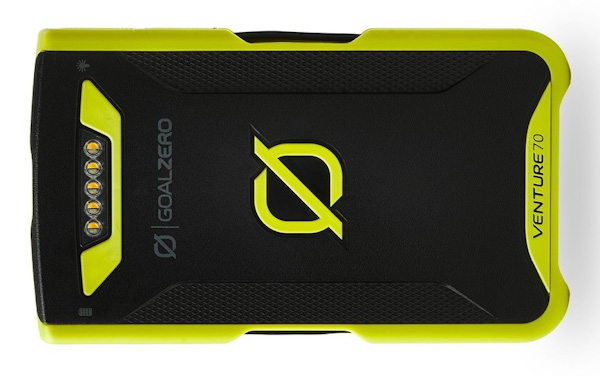
Recharging along the trail is not easy to do in a place like Peru, where the skies are often too cloudy and the canyons too narrow to depend on a solar panel. To keep our two GoPros, Karma Grip, GPS, and two iPhones juiced up, we brought Goal Zero’s Venture 70, which was a lifesaver—worth the 1.1 pounds it added to the pack. Without it, there is really no dependable way to use a GoPro and iPhone camera for a few days if you’re camping. You might get lucky and find an outlet in some campsite, but probably not in a place you feel good leaving your equipment unattended for an hour or two. The Venture 70 can charge two devices at the same time, at full speed, which is very helpful. It can also hold enough power to a phone 5-6 times, 10-20 charges of a headlamp, and maybe 10 charges on a POV camera. It’s hard to tell exactly, because each device is different. If you are backpacking for more than a couple days and plan to take lots of photos, or any video, and you’re using a rechargeable device, you’re going to need this power pack.
12. Water Purifier
We Recommend: MSR Guardian Purifier
Yes, you need to purify the water in Peru. Not just filter, purify – meaning you need something that kills viruses, which slip through most camping filters. The MSR Guardian is the best option out there, by a long shot. Yes, it’s big. About the size of a 16 ounce beer can. But it is brilliantly designed, acceptably light (1.1 pounds), and far, far superior to UV or chemical treatments for most real-world backpacking situations. The pumping is effortless. While it can basically pump sewage, if you use it on reasonably clear water, it will stay that way for a long time (the system is designed to flush and clean its filter as you pump, which is genius). Also, very importantly, the Guardian’s filter is not damaged by typical freezing, which would be an issue in Peru’s high elevations with a conventional filter. I loved how the Guardian screws and seals onto a standard Nalgene, so there’s no concern about the dirty parts contaminating your bottle during pumping. If you can afford it, there’s really nothing that beats it.
13. Compression Sacks
We Recommend: SealLine BlockerLite Compression Dry Sacks
The jungle rain is powerful and it has a way of sneaking around a backpack’s rain cover. As a backup, I think it’s always a good idea to use compression sacks that are waterproof. SealLine has a really smart new set of ultralight, waterproof bags that are tough, easy to use, and have a cool air-escape valve that speeds up the compression. Once you’ve rolled the top of most waterproof, compression bags, you have to put a lot of bodyweight on the bag to force the air out of the membrane. SealLine’s new BlockerLite Compression Dry Sacks have valve that lets the air escape quickly as you compress, saving a bit of time. But even without that feature, these are some of the best waterproof compressions sacks I have ever used.
14. Backpack
We Recommend: Gregory Baltoro 65
Any 50-60 liter backpack should be enough for a 5-day self-supported hike, if you pack well and have light gear. I was testing Gregory’s new Baltoro 65 and my wife Leah was using the women-specific Deva 70, which we absolutely loved. I was simultaneously testing these bags for Outside magazine’s Buyer’s Guide, and these ultimately won the magazine’s Gear of the Year award for their high degree of user comforts coupled with a fairly low weight and a number of very smart design touches (like the waterproof hip pouch for a smartphone).
For foreign trekking, I’m more a fan of burlier, more well featured packs than ultralight ones. I like packs that are tough enough to be overpacked on the front end of the trip and able to handle abusive airline baggage handlers. I like extra features like backpanel zips so you can get at things in the cargo hold while shuffling between airports, and it makes life a lot better when you’re living out of the bag. Still, on trail, the Gregory packs have impressive balance of carrying capabilities and comfort at a fair 5.5 pound weight.
Whatever you bring, go! The Salkantay is a beautiful hike and an amazing approach to Machu Picchu. And if you decide to go, be sure to tag @gearinstitute in your photos on Instagram so we can join you on the trek.








